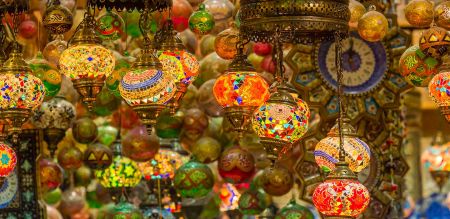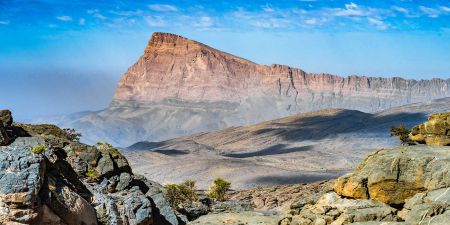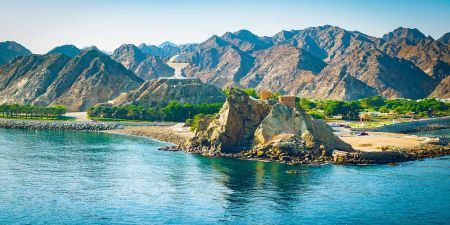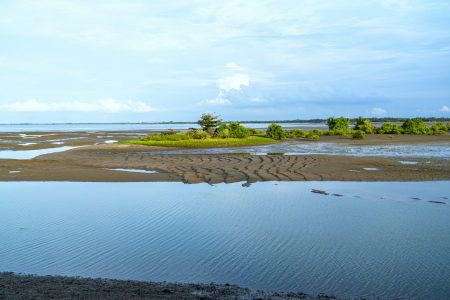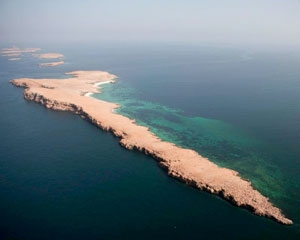Al-Dimaniyat Islands Nature Reserve
Escape to the untouched paradise of the Daymaniyat Islands, a breathtaking marine reserve off Oman’s coast. Comprising nine uninhabited islands, this protected sanctuary is renowned for its crystal-clear turquoise waters, thriving coral reefs, and diverse marine life—including sea turtles, rays, and even whale sharks. Perfect for snorkeling, diving, and kayaking, the islands offer an unforgettable underwater adventure. Daymaniyat is also a critical nesting site for endangered hawksbill turtles. Accessible by boat from Muscat or Al-Seeb, these islands promise serene beaches, vibrant marine ecosystems, and eco-friendly camping under the stars. A must-visit for nature lovers and adventure seekers!

Daymaniyat Island is often called the "Jewel of Oman" for good reason, yet surprisingly few travelers know about this breathtaking marine paradise. Just a short 40-minute boat ride from Muscat, these nine uninhabited islands offer some of the most pristine natural beauty I've ever encountered.
The protected nature reserve of Daymaniyat Islands, Oman was established in 1996 and covers 100 hectares of rocky limestone terrain and white sandy beaches. Indeed, what makes this archipelago truly special is its incredible biodiversity - home to over 100 species of vibrant coral and more than 300 species of fish, including whale sharks that can grow up to 12 meters long. During my visits, I've been fortunate to spot bottlenose dolphins, green turtles, and hawksbill turtles in their natural habitat.
Despite being recognized as Oman's first marine reserve, these islands remain relatively undiscovered by mainstream tourism. In this guide, I'll share everything you need to know about visiting this hidden gem, from the best snorkeling spots to the perfect time for witnessing nesting sea turtles between May and October.
Why the Daymaniyat Islands Are a Hidden Gem
The archipelago that forms the Daymaniyat Islands represents Oman's best-kept secret for several compelling reasons. Unlike more commercialized destinations, these islands maintain their raw, natural allure thanks to careful protection and limited tourism.
A protected marine reserve with limited access
The Daymaniyat archipelago isn't a place you can simply visit on a whim. As a designated nature reserve established by Royal on April 3, 1996, access to these islands is strictly regulated. To experience this pristine paradise, visitors must either book an authorized tour or apply for a special permit if bringing their own boat.
This controlled access serves an important purpose - preserving the delicate ecosystem that makes these islands so special. The Environment Authority enforces specific regulations, particularly during the critical May 1st to October 31st period when beaches are closed to protect nesting sea turtles and migratory birds. However, snorkeling in the surrounding waters remains permitted year-round.
Uninhabited islands with untouched beauty
What truly sets the Daymaniyat Islands apart is their completely uninhabited status. The archipelago consists of nine untouched islands: Kharabah, Hayout, Jabal Al Kabeer, Al Jabal Al Saghir, Al Mamlahah, Aloumiya, Qisma, Al Joun, and Awlad Joun. Spanning approximately 203 square kilometers, these islands lie just 16-18 kilometers off Oman's coast between Seeb and Barka.
The pristine landscape features distinctive limestone formations, ancient coral reefs, and wide sandy beaches bordered by prominent coral ranges. Moreover, the terrain supports about 15 species of wild plants that densely cover parts of Al Kharaaba and Al Jibaal Al Kibaar islands. This untouched environment has earned the archipelago nicknames like "the hidden jewel of the Middle East" and "the Maldives of the Gulf".
Recognized as Oman's first marine reserve
The Daymaniyat Islands hold the distinction of being Oman's first marine reserve, established to safeguard their exceptional ecological value. Furthermore, this protected area serves as a vital breeding ground for globally endangered species.
The islands function as an international center for countless migratory and endemic birds. Additionally, they provide the only known nesting location for the Pandion haliaetus (osprey) in the region. Between May and October, the islands transform into a spectacular panorama as thousands of sea birds migrate during breeding season, including great white herons, gray herons, wading birds, sea ducks, seagulls, and bridled terns.
Perhaps most significantly, large numbers of endangered hawksbill turtles shelter on these islands to nest and lay eggs, while green turtles also visit during summer months. This remarkable biodiversity within a relatively small area makes the Daymaniyat Islands a genuine natural treasure worth protecting for future generations.
Top Things to Do on the Daymaniyat Islands
From underwater paradises to serene shores, the Daymaniyat archipelago offers extraordinary experiences for nature enthusiasts. After several visits to these magnificent islands, I've compiled my favorite activities that showcase why this protected marine reserve deserves its reputation as "the Maldives of Oman."
Snorkeling and diving in coral-rich waters
\The underwater realm of Daymaniyat Island is truly spectacular. The northeastern bay features the most impressive coral formations, where you might encounter tiger sharks and occasionally even mola mola. The crystal-clear waters offer visibility up to 30 meters, especially during winter months.
What makes snorkeling here exceptional is the sheer abundance of marine life. During one visit, I counted 26 turtles and 12 sharks visible at the same time! Expect to see clownfish, parrotfish, angelfish, and Arabia butterflyfish darting through vibrant corals. For divers, the islands offer 12 distinct dive sites with coral gardens, reefs, and walls.
Relaxing on secluded white sand beaches
The pristine white sand beaches bordered by prominent coral ranges offer perfect spots for relaxation. Between November and April, you can even arrange overnight camping on one of the islands. Many visitors report seeing bioluminescence along the shore at night—a truly magical experience.
Watching nesting sea turtles (May–October)
The islands serve as crucial nesting grounds for endangered green and hawksbill turtles. While beaches are completely off-limits during nesting season (May-October), you can still observe these gentle creatures in the surrounding waters. Remember to practice ethical turtle watching—don't chase them; let them approach you naturally.
Kayaking and boat tours around the islands
Various operators offer kayaking excursions and boat tours, including snorkeling trips, dolphin watching, and sunset cruises. Most tours depart from Seeb Marina, approximately 30 minutes from Muscat. Morning departures typically offer calmer conditions and better chances of spotting whale sharks (July to September).
Birdwatching and nature photography
The archipelago is a haven for bird enthusiasts. You might spot Socotra cormorants, great cormorants, western reef egrets, Persian shearwaters, and red-necked phalaropes. The islands also serve as the only known nesting location for ospreys in the region. For photographers, the combination of turquoise waters, white sands, and dramatic limestone formations creates endless opportunities for stunning shots.
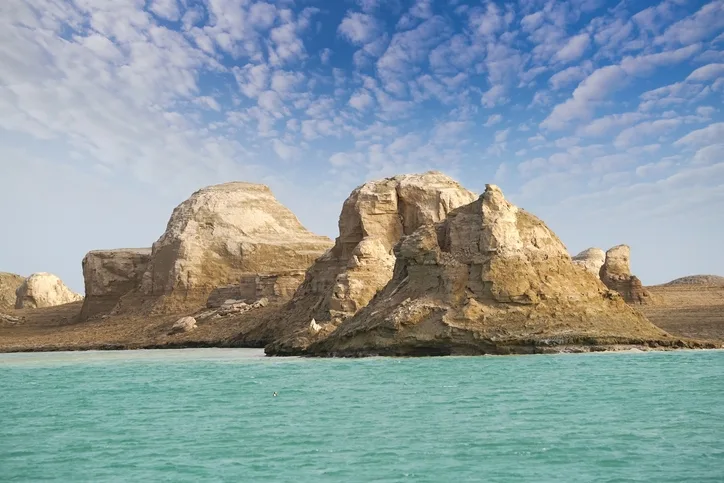
How to Plan Your Visit
Planning a trip to Daymaniyat island requires some preparation, as this isn't your typical tourist destination. After several visits, I've gathered all the essential information to help you plan a seamless journey.
Best time to visit the Daymaniyat Islands
The islands can be visited year-round, yet each season offers something unique. For diving and snorkeling with optimal visibility, March to October is ideal. However, many divers prefer October to April for calmer seas.
Specifically, there are important seasonal considerations to note:
- November to April: This is the only period when landing on beaches is permitted
- May to October: Landing is prohibited to protect turtle nesting grounds, though snorkeling remains allowed
- September to October: Prime time for spotting whale sharks
Where to book tours and permits
As a protected nature reserve, access to Daymaniyat island Oman requires proper authorization. You have two options:
- Book through a licensed tour operator who will handle the permits (recommended for most visitors)
- Apply directly for a permit from Oman's Environment Authority if bringing your own boat
The Environment Authority offers both paid and free permits, with the latter reserved for officials, researchers, and local fishermen. Prior to booking, verify that your tour operator has the necessary permits to avoid complications.
Departure points: Muscat, Al Mouj Marina, Al Sawadi
Most tours depart from one of three locations:
- Al Mouj Marina (formerly Wave Marina) in Muscat – the most popular option
- Seeb Port – approximately 40 minutes from Muscat International Airport
- Al Sawadi beach resort – further along the coast
The boat journey takes approximately 30-45 minutes, depending on your departure point. For those without a rental car, taxis are recommended as public transportation is limited.
What to pack for a day trip
For a comfortable experience, bring:
- Swimwear (one-piece suits are more conservative)
- Sunscreen, hat, and sunglasses
- Water shoes or sturdy flip-flops if hiking is planned
- Snorkeling gear (optional, as many operators provide equipment)
- GoPro or waterproof phone case for underwater photography
- Backpack to secure belongings during the fast boat ride
Protecting the Islands for Future Generations
Preserving the pristine beauty of Daymaniyat island requires collective effort from all visitors. As I've witnessed firsthand, the delicate balance of this ecosystem depends on everyone following specific guidelines designed to protect this natural treasure.
Rules and regulations for visitors
The Environment Authority has established clear regulations to safeguard the Daymaniyat Islands Nature Reserve. Most notably, landing or camping on the islands is completely prohibited from May 1st to October 31st each year to protect nesting wildlife. Even outside this period, camping is only permitted on two specific islands: Al Jabal Al Kabeer and Al Jawn.
All visitors must obtain an official permit before entering the reserve. These permits are valid for one day only and cannot be modified or postponed. Primarily, the permit system helps regulate visitor numbers and minimize environmental impact.
Essential rules to remember:
- Collecting coral or disturbing marine species is strictly prohibited
- Approaching, touching, or disturbing nesting turtles and their eggs is forbidden
- No plants, seeds, cats, dogs, or other animals may be brought to the islands
- All waste must be taken off the island—nothing can be left behind
- Lights and fires must be extinguished by 9:00 pm
Why conservation matters here
The Daymaniyat archipelago essentially serves as a vital sanctuary for numerous species. The islands provide optimal conditions for turtle and bird nesting, with sea turtles using these shores as critical breeding grounds.
Conservation efforts have successfully maintained the pristine condition of most habitats. According to conservation reports, "except for some isolated disturbed state of the coral reef... all other components of the reserve are intact and still in pristine condition".
The reserve's protection has subsequently allowed natural ecological processes to continue unimpeded, supporting the rich biodiversity that makes these islands so special. Four dedicated rangers patrol the reserve, monitoring fishing and diving activities to ensure compliance with regulations.
How to be a responsible traveler
When visiting Daymaniyat island Oman, I always follow ethical wildlife viewing practices. For turtle encounters, remember the golden rule: don't swim toward turtles—instead, respectfully observe from a distance and let them approach you if they choose.
Use only reef-safe sunscreen to prevent coral damage. According to marine biologists, standard sunscreens can harm the protective mucus layer on marine species, leaving them vulnerable to infections.
Ultimately, responsible tourism means leaving absolutely no trace. This includes taking all garbage with you when departing and staying on designated paths to protect plant life and animal habitats.
By adhering to these guidelines, we can certainly ensure future generations will enjoy the extraordinary beauty of Daymaniyat island just as we do today.
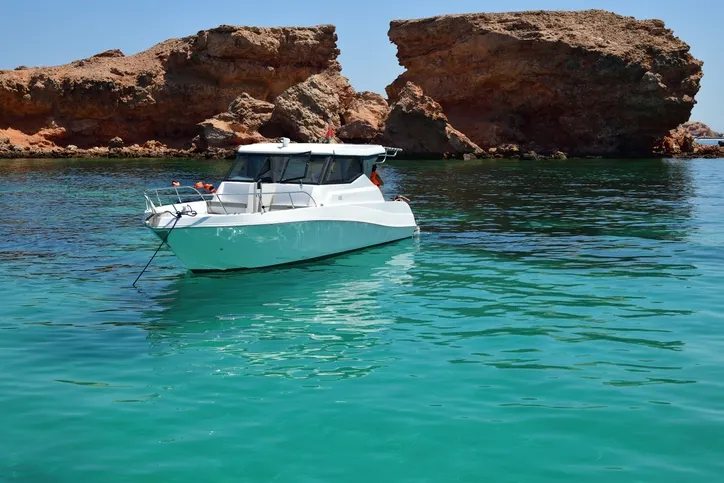
Conclusion
The Daymaniyat Islands truly stand as a natural paradise that few travelers discover. Throughout my visits, I've witnessed firsthand why these nine uninhabited islands deserve their reputation as the "Jewel of Oman." Their crystal-clear waters, vibrant coral reefs, and rich biodiversity make them an unparalleled destination for underwater enthusiasts and nature lovers alike.
Undoubtedly, the careful protection measures implemented since 1996 have preserved this marine sanctuary in its pristine state. Access restrictions, seasonal regulations, and dedicated conservation efforts ensure the islands remain a thriving ecosystem for hundreds of marine species, nesting turtles, and migratory birds.
Planning your visit requires some preparation - from choosing the right season to securing proper permits. Nevertheless, the reward far outweighs the effort. Whether swimming alongside graceful sea turtles, exploring coral gardens teeming with colorful fish, or simply relaxing on secluded white sand beaches during the permitted seasons, the experiences here feel both exclusive and authentic.
My hope remains that all visitors will embrace the responsibility of protecting this ecological treasure. Following the established guidelines not only helps preserve the islands but also enhances your connection with this unspoiled environment. The Daymaniyat Islands offer a rare glimpse into what nature looks like when carefully safeguarded from excessive human intervention.
Last but certainly not least, remember that the true magic of Daymaniyat Islands lies in their untouched character. Unlike heavily developed tourist destinations, these islands provide an increasingly rare opportunity to experience nature in its purest form - something we must collectively work to preserve for future generations.
FAQs
1. What makes the Daymaniyat Islands unique?
The Daymaniyat Islands are a protected marine reserve consisting of nine uninhabited islands. They feature pristine beaches, vibrant coral reefs, and rich biodiversity, making them a haven for snorkeling, diving, and wildlife watching.
2. When is the best time to visit the Daymaniyat Islands?
The islands can be visited year-round, but the best time depends on your interests. For diving and snorkeling with optimal visibility, visit between March and October. To access the beaches, plan your trip between November and April.
3. How can I get to the Daymaniyat Islands?
You can reach the Daymaniyat Islands by booking a tour with a licensed operator or obtaining a permit to bring your own boat. Most tours depart from Al Mouj Marina in Muscat, Seeb Port, or Al Sawadi beach resort, with the boat journey taking about 30-45 minutes.
4. Are there any restrictions for visitors to the Daymaniyat Islands?
Yes, there are several restrictions to protect the islands' ecosystem. Landing on the islands is prohibited from May 1st to October 31st to protect nesting wildlife. Visitors must obtain permits, and activities like collecting coral or disturbing marine life are strictly forbidden.
5. What wildlife can I expect to see at the Daymaniyat Islands?
The islands are home to a diverse array of marine life, including over 300 species of fish, sea turtles (green and hawksbill), and occasionally whale sharks. You may also spot various bird species such as Socotra Cormorants and Western Reef-Egrets.
From Majestic Mountains to Turquoise Coastlines, Plan Your Dream Oman Trip Now !
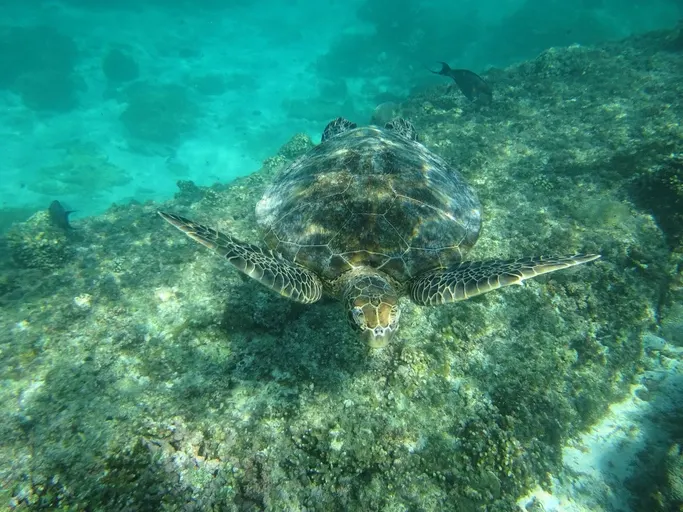
Customize Your Dream Vacation!
Get in touch with our local experts for an unforgettable journey.
Plan Your Trip
